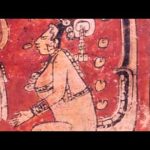Dragon Caught on Tape (Are Dragons Real??)
“The association of the serpent with a monstrous opponent overcome by a heroic deity has its roots in the mythology of the Ancient Near East, including Canaanite (Hebrew, Ugaritic), Hittite and Mesopotamian. Humbaba, the fire-breathing dragon-fanged beast first described in the Epic of Gilgamesh is sometimes described as a dragon with Gilgamesh playing the part of dragon-slayer. The legless serpent (Chaoskampf) motif entered Greek mythology and ultimately Christian mythology, although the serpent motif may already be part of prehistoric Indo-European mythology as well, based on comparative evidence of Indic and Germanic material.
Although dragons occur in many legends around the world, different cultures have varying stories about monsters that have been grouped together under the dragon label. Some dragons are said to breathe fire or to be poisonous, such as in the Old English poem Beowulf.[3] They are commonly portrayed as serpentine or reptilian, hatching from eggs and possessing typically scaly or feathered bodies. They are sometimes portrayed as hoarding treasure. Some myths portray them with a row of dorsal spines. European dragons are more often winged, while Chinese dragons resemble large snakes. Dragons can have a variable number of legs: none, two, four, or more when it comes to early European literature.
Dragons are often held to have major spiritual significance in various religions and cultures around the world. In many Asian cultures dragons were, and in some cultures still are, revered as representative of the primal forces of nature, religion and the universe. They are associated with wisdom—often said to be wiser than humans—and longevity. They are commonly said to possess some form of magic or other supernatural power, and are often associated with wells, rain, and rivers. In some cultures, they are also said to be capable of human speech. In some traditions dragons are said to have taught humans to talk.”
http://en.wikipedia.org/wiki/Dragon
Leave A Reply
You must be logged in to post a comment.









 Paranormal
Paranormal

